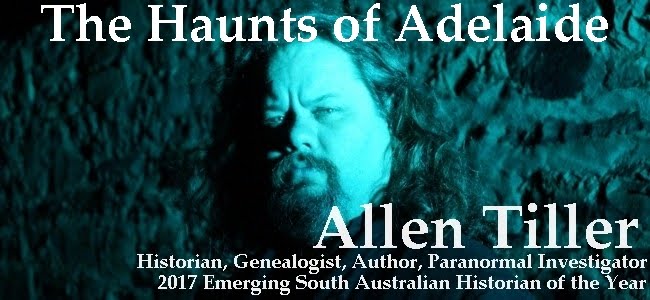A Haunting at Crafers: Wonnaminta
Built by Arthur Hardy after being forced to sell his home, Mount Lofty House, this dwelling close to the Adelaide Hills town of Crafers has been lived in by many of Adelaide's wealthiest families.
Known as “Number Seven” by the Hardy family when they lived in the house, the name Wonnaminta, which is the combination of two Aboriginal words, "Wonna" meaning “boomerang”, and Minta meaning “water”, was given to the house by the Kennedy family.
The Kennedys were a wealthy pastoral family who also had a station with the same name in outback NSW.
The Kennedys, Robert and Mary, first moved from Collingwood, Goulbourn to a Station near Tibooburra in far North-West New South Wales, where they took over Wonnaminta Station from squatters.
The Kennedys raised livestock on their station and prospered from good farming techniques, which allowed them to invest in property.
 |
| (above) Monumental Headstone (1895). (Image courtesy of Prue Grieve) |
The name Kennedy became synonymous with hospitality in the region. Mary Kennedy tended to anyone injured in the region, acting as a nurse. She also organised race meetings and field days for the local community. Mary was also held in high regard by the local aboriginals, with whom she offered free education.
The heat of the outback became overwhelming for Mary, and the family bought a house in Mount Lofty, near Adelaide, South Australia in the hope she could find some relief from her exhaustion there.
The Kennedys renamed the house “Wonnaminta”, the same as the station, and resided in Adelaide at their summer house while their outback station was overseen by an employee.
Although Mary loved the NSW Station, she also loved the Crafer's house just as much. Unfortunately for the Kennedys, things took a bad turn when in 1894 a plague of rabbits descended upon the station, destroying much of the feed for the livestock. Large debts soon followed as they tried to pay for food for the animals. The debts became too much for the family, and eventually, they were forced to sell both the station in NSW and the house in Crafers.
In 1895, after living in exile in Melbourne, Robert died and Mary was left a widow with very little money. Mary died on the 12th of December 1915 at The Terrace in Armadale, NSW.
It is alleged that Mary's presence has been both seen and felt at both the NSW Station and the house at Crafers.
Her spirit is alleged to have been seen in both the Wonnaminta Station and house, straightening quilts, smoothing pillows and sitting patiently alongside the sick as they lay in bed.
At her Adelaide residence, she has also been seen sitting on the veranda in a rocking chair looking over the gardens.
She is sometimes seen wearing a black frock with a tight waistband, and shiny beads, at other times a grey gown, but she always has her hair parted and drawn back.
 |
| The Australian Women's Weekly (1933 - 1982) Wednesday 14 August 1974 page 36 © 2014 Allen Tiller www.eidolonparanormal.com.au |









.JPG)
.JPG)
.JPG)

